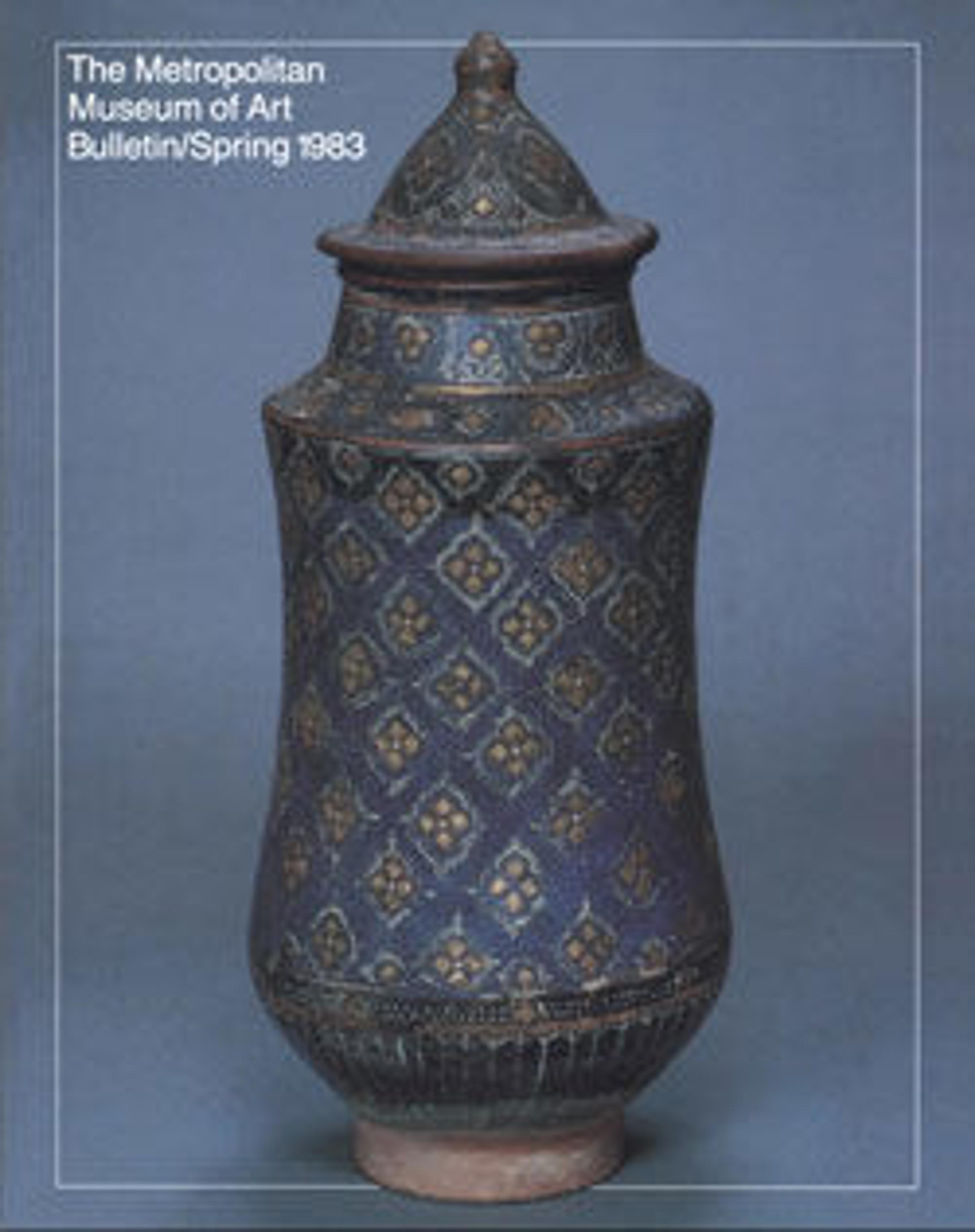Black and Blue Painted Bowl
The whiteness of stonepaste provided a canvas upon which potters could paint pigments directly, rather than applying a slip. By the early thirteenth century, a new type emerged, decorated in black and blue against the white ground, usually with vegetal motifs inside radial frameworks. The stable black pigment creates crisp outlines and fine details, while the rather runny blue fills contours and highlights forms. Underglaze painting would have long‑term consequences on the development of Iranian ceramics.
Artwork Details
- Title: Black and Blue Painted Bowl
- Date: early 13th century
- Geography: Made in Iran, probably Kashan
- Medium: Stonepaste; polychrome painted under transparent glaze
- Dimensions: H. 3 7/8 in. (9.8 cm)
Diam. of rim: 8 13/16 in. (22.4 cm)
H. of base: 13/16 (2.1 cm)
Diam. of base: 3 7/16 in. (8.7 cm) - Classification: Ceramics
- Credit Line: Purchase, Joseph Pulitzer Bequest, 1964
- Object Number: 64.256
- Curatorial Department: Islamic Art
More Artwork
Research Resources
The Met provides unparalleled resources for research and welcomes an international community of students and scholars. The Met's Open Access API is where creators and researchers can connect to the The Met collection. Open Access data and public domain images are available for unrestricted commercial and noncommercial use without permission or fee.
To request images under copyright and other restrictions, please use this Image Request form.
Feedback
We continue to research and examine historical and cultural context for objects in The Met collection. If you have comments or questions about this object record, please complete and submit this form. The Museum looks forward to receiving your comments.
